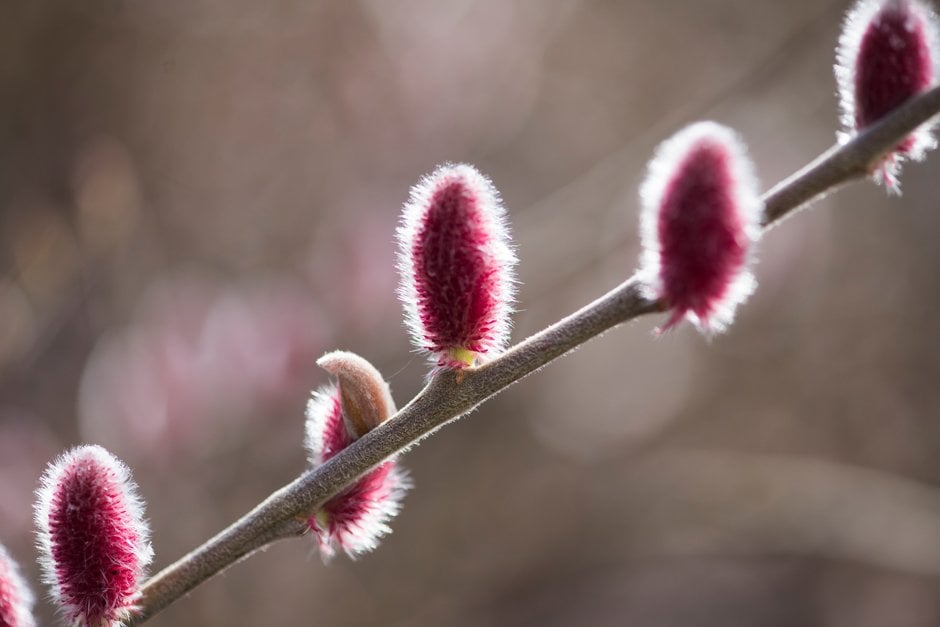Salix gracilistyla 'Mount Aso' (m)
willow 'Mount Aso'
A bushy shrub reaching about 3m, with slightly bluish leaves, silvery on the underside. The catkins, produced in spring before the leaves, are pink with a silvery sheen
Size
Ultimate height
2.5–4 metresTime to ultimate height
5–10 yearsUltimate spread
2.5–4 metresGrowing conditions
Moisture
Moist but well–drainedpH
Acid, Alkaline, NeutralColour & scent
| Stem | Flower | Foliage | Fruit | |
| Spring | Pink Grey Silver | Blue Green Grey Silver | ||
|---|---|---|---|---|
| Summer | Blue Green Grey Silver | |||
| Autumn | Blue Green Grey Silver | |||
| Winter |
Position
- Full sun
Aspect
South–facing or West–facing or East–facing
Exposure
Exposed or Sheltered Hardiness
H5Botanical details
- Family
- Salicaceae
- Native to GB / Ireland
- No
- Foliage
- Deciduous
- Habit
- Bushy
- Genus
Salix are deciduous shrubs and trees of diverse habit, with simple leaves and tiny flowers in catkins, male and female usually on separate plants. Some are valued for their brightly coloured winter shoots, others for their foliage or showy male catkins
- Name status
Accepted
How to grow
Cultivation
Grow in any deep, moist but well-drained soil in full sun. Avoid shallow chalk soil
Propagation
Root softwood cuttings in early summer or hardwood cuttings in winter
Suggested planting locations and garden types
- City and courtyard gardens
- Coastal
- Cottage and informal garden
- Wildlife gardens
- Cut flowers
- Flower borders and beds
Pruning
Pruning group 7, every two or three years in March, for best show of catkins
Pests
May be susceptible to aphids, caterpillars, leaf beetles, sawflies, willow scale
Diseases
May be susceptible to willow anthracnose, honey fungus and rust
Love gardening
Sign up to receive regular gardening tips, inspiration, offers and more
View our Privacy Policy
Get involved
The Royal Horticultural Society is the UK’s leading gardening charity. We aim to enrich everyone’s life through plants, and make the UK a greener and more beautiful place.

